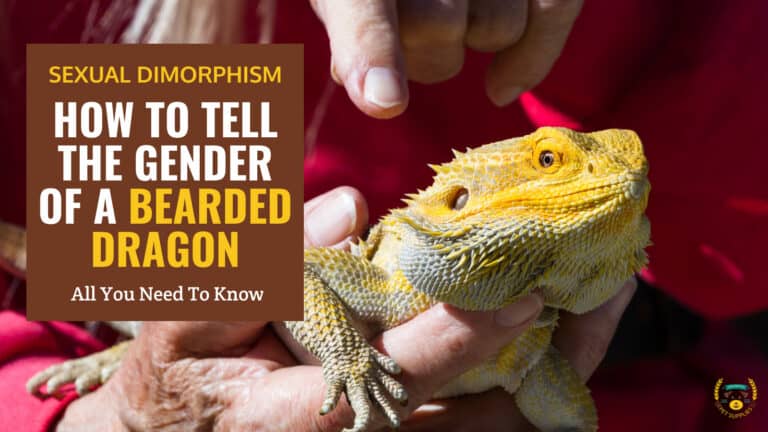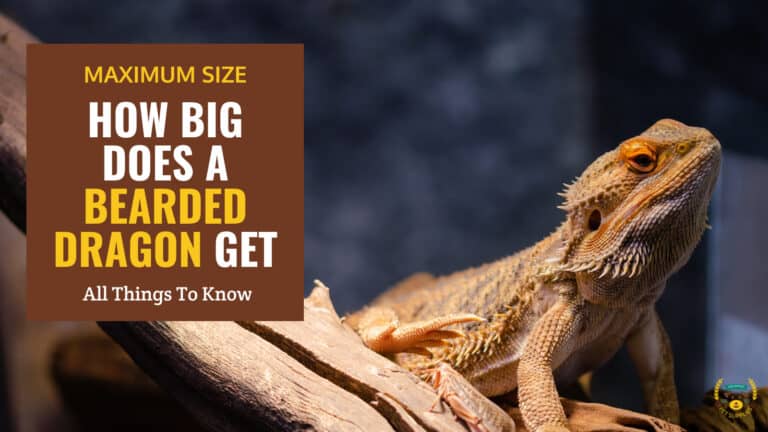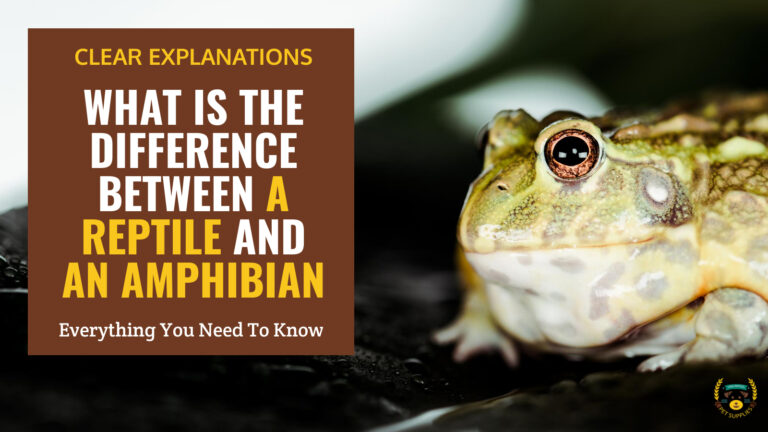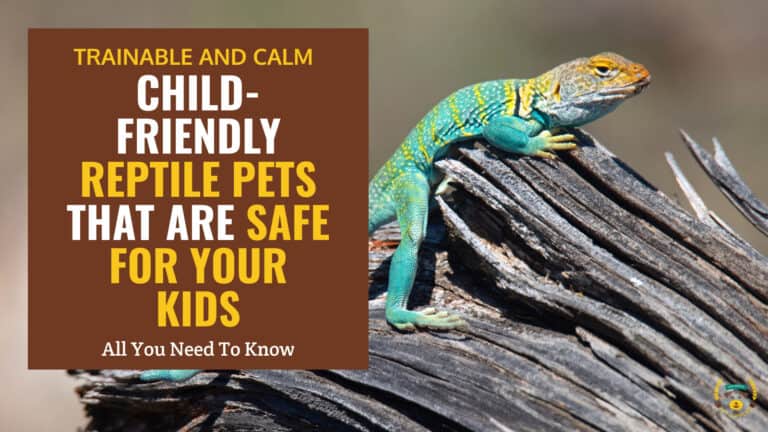How Big Do Ball Pythons Get? Full-Grown Size, Weight, and Growth Chart
Last updated: February 8, 2024
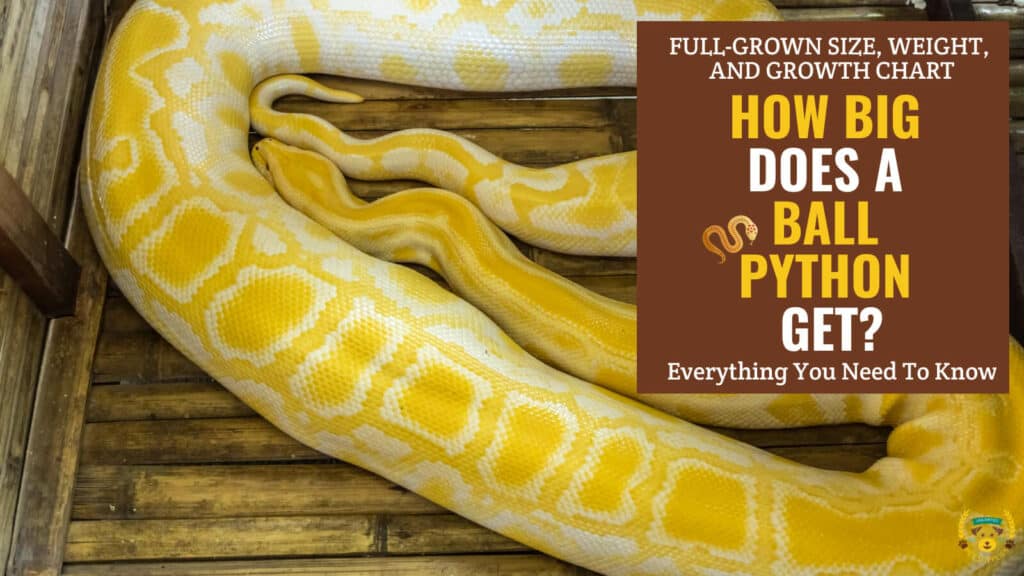
Summary
- Ball pythons are medium-sized snakes that grow to be 2.5 to 5 feet long, with females being larger than males.
- Baby ball pythons are 10 to 17 inches long and weigh 0.11 to 0.18 pounds at hatching.
- Juvenile ball pythons are 20 to 27 inches long and weigh 0.57 to 0.76 pounds at 6 months old.
- Sub-adult ball pythons are 1.5 to 3 feet long and weigh 1.10 to 3.94 pounds at 1 to 3 years old.
- Adult male ball pythons are 2.5 to 3.5 feet long and weigh 1.98 to 2.64 pounds.
- Adult female ball pythons are 3 to 6 feet long and weigh 2.64 to 6.61 pounds.
- Female ball pythons grow 1.5 times faster than males.
- Measuring your snake regularly will help ensure it is in good health and maintaining a healthy weight.
Are you considering buying a reptile to keep as a pet? How about getting yourself a snake? If you are into reptiles in general and snakes in particular, then you'll certainly enjoy the company of a ball python, as one of the best pet snakes for beginners.
In the world of pet snakes, Ball Pythons (also called Royal Pythons) are considered medium-sized snakes. However, ball pythons are the smallest African sub-species compared to other types of pythons. They are stocky reptiles that are usually calmer, which makes them preferred pet snakes among many reptile lovers.
Ball pythons are native to west and central Africa, where they can be found in open forests and grasslands. Their calm temper makes them great to keep as home pets. However, these slow-moving reptiles like pythons require proper care, special attention and diet to keep growing and be in good health.
In this article, we will cover the topic of pet ball pythons in as much detail as possible, from the size of these beautiful creatures in different stages of their life to the growth rates and differences between males and females. We will also answer the most frequent questions about Royal Pythons.
If you are thinking of adopting a Ball Python, then you have come to the right place. All you need to do for now is continue reading to know everything you need to keep a healthy and happy pet python.
Suggested Reading: Beginner's Guide To Keeping Your First Pet Reptile
How Big Do Ball Pythons Get?
In captivity, a Royal Python can live up to 30 years if properly taken care of. Therefore, it is of utmost importance for any future ball python owner to understand these amazing creatures and provide them with everything they need to be healthy.
Ball pythons have a sexual dimorphism; that is, they exhibit different growth behavior depending on the gender of the snake! While for many species, the norm is for males to grow bigger than females, it is actually the opposite for ball pythons.
Besides gender, the size of a juvenile ball python depends mostly on its mother’s size. The smaller the mother is, the smaller her offspring will be. The size of adult ball pythons depends on other things including genetics, diet, etc.

How Big Do Male and Female Ball Pythons Get?
According to a 2005 scientific study conducted by scientists from the French National Centre for Scientific Research, there is a considerable difference between male and female ball pythons concerning body weight, size, growth rate, and even jaw length.
While both males and females are the same size and weight at hatching time, females have a genetically faster growth rate than males, which translates into them being larger during all the stages of their life.
In fact, female ball pythons grow around 1.5 times faster than males. As a result, at the age of three, males can measure between 2.5 and 3 feet while females can be much larger: between 4.5 and 5 feet; in some rare cases, female royal pythons were reported to grow up to 6 feet or more. The following is a chart that provides the average length for both male and female royal pythons during each life stage:
| Age | Males | Females |
|---|---|---|
| Hatching | 10 to 17 inches | 10 to 17 inches |
| 6 Months | 20 to 27 inches | 20 to 27 inches |
| 9 Months | 25 to 30 inches | 25 to 35 inches |
| One year | 1.5 to 2 feet | 2 feet |
| 1.5 years | 2 to 2.5 feet | 2 to 3 feet |
| Two Years | 2 to 3 feet | 2.5 to 3.5 feet |
| Three Years | 2.5 to 3.5 feet | 3 to 5 feet |
| Four+ Years | 2.5 to 3.5 feet | 4 to 6 feet |
Baby Ball Python Size
First of all, it is important to note that between hatching time and the age of 3 - 6 months, there is almost no difference in size and weight between male and female pythons. After that, genetics kick in, and noticeable differences can be seen between the two genders, both in size and weight.
It is also essential to know that there are no 'exact' numbers to specify the size and weight of ball pythons of different ages, as these can usually be affected by many factors that will be discussed later. Therefore, the given numbers are approximate average sizes and weights of royal pythons.
At hatching time, baby pythons can measure 10 to 17 inches and weigh between 0.11 and 0.18 pounds ( about 50 to 80 grams). One month later, the baby pythons can grow to almost 0.16 - 0.19 pounds. There is still no noticeable difference between males and females.
Juvenile Ball Python Size
A ball python can be considered 'juvenile' starting at the age of three months and above (before they reach one year). Normally, At this point, the snake should have doubled its hatching size and weight. Also, females start to grow faster than males.
A six-month-old male royal python will weigh 0.57 - 0.75 pounds, while females will be between 0.63 and 0.76 pounds. Both genders are usually 20 to 27 inches in length.
At the age of nine months, juvenile ball pythons can reach 25 to 30 inches in length (females can reach 35 inches). Their weight can vary between 0.88 and 0.94 pounds for males and 0.94 to one pound for females.
Sub Adult Ball Python Size
Between one and three years of age, a ball python is considered a sub-adult. During this period, male pythons can grow to reach 1.10 to 1.76 pounds and up to 2.42 pounds by the end of the second year. On the other hand, females weigh between 1.4 - 1.76 pounds and gain more weight by age 2 to reach as high as 2.64 - 3.94 pounds.
When it comes to size, males can be 1.5 - 2 feet long for the first year and reach up to three feet, while females reach the length of two feet at age one and can grow as long as 3.5 feet by the end of the sub-adult period.
Adult Full-Grown Ball Python Size

Royal pythons reach maturity at age three and beyond. There is an interesting fact that distinguishes males and females. Male ball pythons reach their final adult size when they reach age three and stop growing; however, females tend to keep growing for approximately another year!
The adult male ball python reaches an average weight of 1.98 - 2.64 pounds and a length of 2.5 - 3.5 feet at age three and seemingly stops growing. At that same age, females are already significantly larger with a weight ranging between 2.64 and 4.40 pounds and an average size of three to five feet.
During the fourth year, an adult female still grows up to 4 - 6 feet and 4.41 - 6.61 pounds. As a result, females can grow up to 33% larger than males.
How Fast Do Ball Pythons Grow?
As we have mentioned earlier, starting from the age of three months, the growth rate of male pythons becomes much lower than that of females. Female pythons grow 1.5 times faster than males and end up weighing around 30% more or higher at age three or four years.
Measuring your snake will ensure it is in good health and is maintaining a healthy weight. This way, you can avoid any potential health problems. For a female, a normal growth rate is around one foot per year, and the rate is slower at age 4, while males only grow eight inches every year until the age of three years, the time they reach sexual maturity.
How Heavy Is a Full Grown Ball Python?
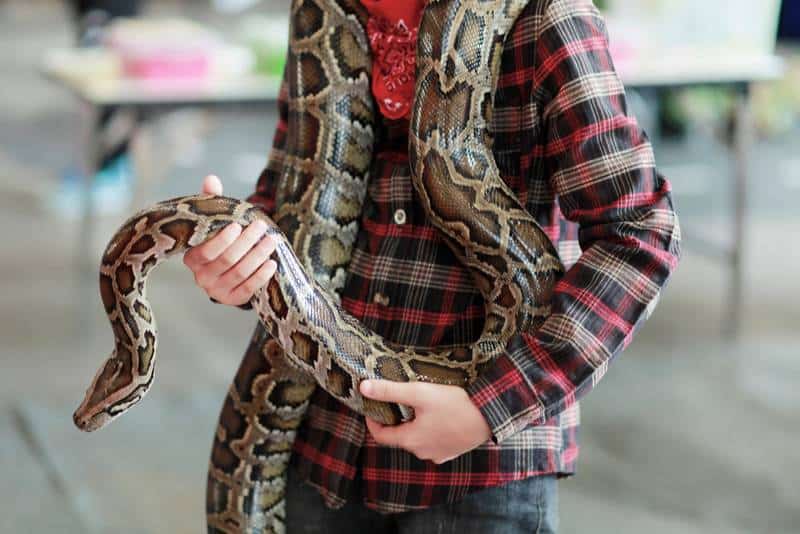
Male and female Royal pythons have very different growth rates and are usually much different in size and weight by the time they reach maturity. However, even at that point, males seem to stop growing while females keep growing for around one more year (until age 5 or 6). This is something referred to as Sexual dimorphism.
A male adult snake can weigh around 2.65 pounds by age three. On the other hand, females tend to be much heavier and weigh up to 6.6 pounds. The following is a chart that provides average weights for both male and female royal pythons during each life stage:
| Age | Males | Females |
|---|---|---|
| Hatching | 1.76 to 2.83 Oz. | 1.76 to 2.83 Oz. |
| 6 Months | 9,7 to 12.7 Oz. | 10.6 to 12.7 Oz. |
| 9 Months | 14.1 to 15.9 Oz. | 15.9 to 16.6 Oz. |
| One year | 1.1 to 1.76 lbs. | 1.43 to 1.76 lbs. |
| 1.5 years | 1.32 to 1.98 lbs. | 2.2 to 3.1 lbs. |
| Two Years | 1.76 to 2.42 lbs. | 2.65 to 4 lbs. |
| Three Years | 1.98 to 2.65 lbs. | 2.65 to 4.4 lbs. |
| Four+ Years | 1.98 to 2.65 lbs. | 4.4 to 6.6 lbs. |
Factors Affecting the Size of Ball Pythons
The size of an adult ball python varies greatly depending on the type of food it eats. For example, a diet rich in more nutrient types of meat will significantly increase the size of the animal. A diet consisting mainly of insects or less nutrient meat from smaller prey will produce smaller animals.
In the wild, male pythons spend a lot of time on trees, meaning that their diet consists mainly of birds. On the other hand, females spend more time on the ground and feed on various prey, including rodents, lizards, and any mammals that the snakes can overpower. The type of food consumed can be related to the size of the snake.
However, the size of a ball python does not always correlate directly with the amount of food consumed. There are other factors involved, including genetics, hormones, and environmental conditions.
For instance, if a mother ball python consumes too much food during pregnancy, its offspring may be born small. In addition, some snakes have been known to eat so much food that they become obese. This condition can lead to health problems like heart disease and diabetes.
Just like any other reptile (chameleons and leopard geckos for example), genetics is another determining factor for the size of ball pythons. In other words, if a large snake mates with another large snake, there are higher chances for the offspring to grow large. If the parents are both small in size, the offspring will most probably be smaller too.
Snake owners that are concerned with their pet snake size usually ask the breeder to let them see the parents of the pet they are adopting; the size of the parents gives them an idea of the probable future size of their pet.
Pythons' size can also be directly related to their environment (or enclosure size). For example, snakes that are kept in smaller enclosures will have trouble stretching out, feeding properly, or even shedding their skin (eventually affecting growth). Conversely, wild snakes or ones living in spacious enclosures won't have such problems and will probably grow larger.
My Ball Python Doesn't Grow or Gain Weight
Many python owners complain about their pets not growing or gaining weight. There are various potential causes of the issue. Let's discuss them individually in more detail.
Insufficient Diet
It is highly probable that your pet is not growing because it's not eating enough, or the type of food it's eating doesn't provide appropriate nutrition.
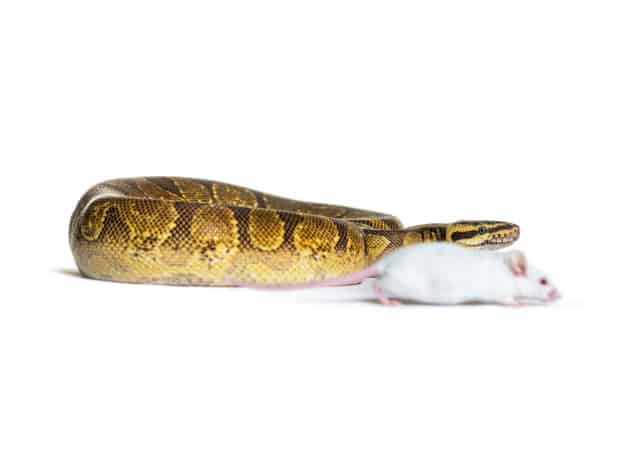
If you are having difficulty getting your pet to gain weight, try increasing the amount of food it gets. However, make sure that the food you give has high nutritional value. Also, ensure that its enclosure is well-ventilated, spacious, and clean.
Additionally, consider incorporating essential vitamins and supplements into your pet's diet, as advised by your veterinarian, to address any potential nutritional deficiencies.
A healthy ball python should consume at least 2% of its body weight daily (though pythons only need to feed between once a week and once a month, depending on their age). If your pet doesn't seem to be consuming enough food, talk to your veterinarian about giving it supplements.
Also, bear in mind that pythons are picky creatures. Once they get used to one type of diet, it becomes very difficult to switch to another food type. So if your pet stopped eating after a sudden diet change, maybe it's just having problems adapting and switching to the new kind of food.
Winter Fasting
Snake winter Anorexia (winter fasting) is another factor that may be causing your pet snake to stop growing or even lose weight. It is perfectly normal for some pythons to stop eating during the cold winter days. Even if the temperature inside the enclosure doesn't drop or change (as what happens typically in the wild), the reduced daylight hours may trigger this natural behavior in your snake.
This is part of the snake's inherited DNA and genetics that mimics what happens in the wild. During the cold or freezing days of winter, movement is greatly restricted and the possibility of catching prey is reduced. Instead of wasting energy trying to move and hunt (in vain), wild snakes simply resort to winter fasting and restrict movement to save energy until the prey is more abundant.
Disease or Illness
Your pet snake may be losing weight or not growing because of an underlying medical condition. These include infectious stomatitis (also known as mouth rot), Septicemia (blood poisoning), inclusion body disease, respiratory disease (upper or lower), etc.
Those are the most common diseases that affect pet snakes. They are more or less severe (or even fatal sometimes) and are usually caused by bacterial infections (even though viral infections are also possible) that accompany a mouth rot.
Sometimes, pet snakes may simply have thermal burns caused by the heat sources (like hot rocks) inside the enclosure. Other times, skin shedding issues (Dysectysis) can cause the pet to lose appetite and stop growing. The issue is commonly caused by an imperfect ambient temperature, body temperature or air quality. Moreover, it is also possible that your snake gets bitten by its live prey (if you feed it live animals), leading to infections that may affect appetite.
Parasites
Parasites are another factor that can affect your royal python's appetite and cause weight loss. The most common parasites that affect pet snakes include cryptosporidiosis, salmonellosis, giardiasis, coccidia, roundworms, hookworms, tapeworms, and others.
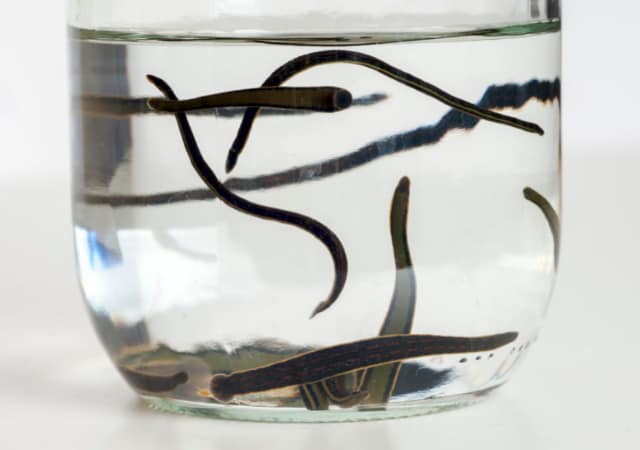
Parasites are microscopic organisms that enter the body through the mouth, skin, or other openings. Some are harmful while others are beneficial. Parasites can either stay in the body and multiply or leave the body without being digested.
In both cases, they will eventually cause health issues such as diarrhea, vomiting, abdominal pain, weight loss, lethargy, etc.
Infections from these parasites can be prevented with proper care and hygiene. For example, if you keep your reptile cage clean and properly ventilated, then there is no way that any parasite can easily infect your pet. However, if you don't take good care of your pet, then it is likely that you'll end up with an infection (and humans may get infected too!).
Avoiding Obesity in Ball Pythons
Some pet snake owners try to take good care of their pets to the point of overfeeding them. This can lead to obesity in a captive ball python. It is a very common mistake that is often made by owners with good intentions ( to provide enough food for their beloved snake). The problem can also be caused by a small enclosure or lack of exercise.
Snake obesity is widely mistaken for a faster growth rate. As a result, it is vital for every owner to learn how to distinguish between fast growth and obesity. If you notice your pet becomes soft to the touch or squishy, or you see any folding scales (with the skin being visible between the scales) or wrinkling, a round body shape, etc., your snake is obese. These are the most easily noticeable signs.
Other signs of snake obesity include symptoms like increased thirst, urination, and aggression. Overweight pythons tend to eat more than normal-sized snakes. Also, they require more water and food.
More signs of snake obesity include:
- Excessive droppings.
- Slow movement.
- Lethargy.
- Vocalization (making weird sounds, such as loud hissing or even squeaking).
- Lack of interest in mating.
It is important to keep an eye on your pet snake to avoid any obesity-related issues.
Fortunately, there are certain things you can do to help your beloved reptile avoid obesity:
- Ensure you are appropriately feeding your pet (not too often, and the prey size is adequate for its age).
- Create more exercise opportunities inside the enclosure by putting more obstacles that require more movement from the pet to move.
- Try to handle your pet more often and encourage exercise and movement (without causing stress).
- Encourage your snake to move more. For instance, you can do so by supervising the pet moving around the house or up and down the stairs.
- Ensure that the pet's habitat size is adequate. It should provide enough room for the snake to stretch out, move freely and even hunt for any live prey you give it.
- Keep records of your pet's weight and ensure it has the proper weight for its age and gender.
Here is a good video (14 minutes 17 seconds) on how to identify an overweight or underweight pet python:
Why Won't My Ball Python Eat?
Sometimes, a python in captivity would stop eating altogether. As a concerned owner, you start asking yourself questions about what may be wrong with your beautiful reptile.
There are many reasons why a royal python may stop eating, some of which we have discussed earlier. For instance, your pet may simply be fasting during the cold winter months (Winter anorexia). It may also be sick, having a bacterial or viral infection, or parasites causing it to stop eating. These are some more serious scenarios caused by an underlying natural or medical condition.
There are, however, some other things that may cause the snake to stop eating totally. These are simpler causes that are usually easier to fix. Here are some of them:
- You got yourself a picky pet snake: Some royal pythons are known to be extremely picky creatures when it comes to diet. Any simple change in prey can cause the pet not to eat at all. For instance, if you switch from life to pre-killed prey or vice versa, there is a good chance that your python won't even go near the new prey item. Diet changes need to be gradual and take some adjustment time!
- The enclosure was changed: Changes to the snake's enclosure can cause stress, which is usually overlooked as a serious condition that affects a python's eating habits and behavior.
- Other snakes in the enclosure: Bringing other snakes to your pet's enclosure is another stress-causing action that may prevent it from eating.
- Too much handling: While regularly handling your pet python has been proven to be beneficial, too much handling can have opposite results. Your snake will get stressed out, be more aggressive and potentially stop eating.
Final Thoughts
Ball pythons are amazing creatures. They are known to be calm, medium-sized snakes that are relatively easy to handle (compared to other species). They are also some of the pickiest pets to keep at home, especially when it comes to food. The slightest changes can cause the pet to be stressed out and behave abnormally. That's why it's important to understand these snakes before deciding to keep one as a pet.
Pet royal pythons need special attention to keep growing and healthy. Everything needs to be monitored, from the snake's weight and size to the enclosure size, ambient air temperature, and humidity levels. Everything has to be perfect; otherwise, your pet python may have more or less serious issues that affect its health and growth.
In this article, we provided everything you need to know to adopt a royal python and monitor its health and growth. We also talked about the most common issues that may cause your snake to behave abnormally so that you have an idea of what needs to be done in case of problems. So, all you have to do now is go ahead and choose your favorite ball python companion. If you feed it properly and take good care of it, you can be sure that your snake will keep you company for decades to come.
If you still have any queries, please leave a comment below, or send us an email. We will be glad to help!



